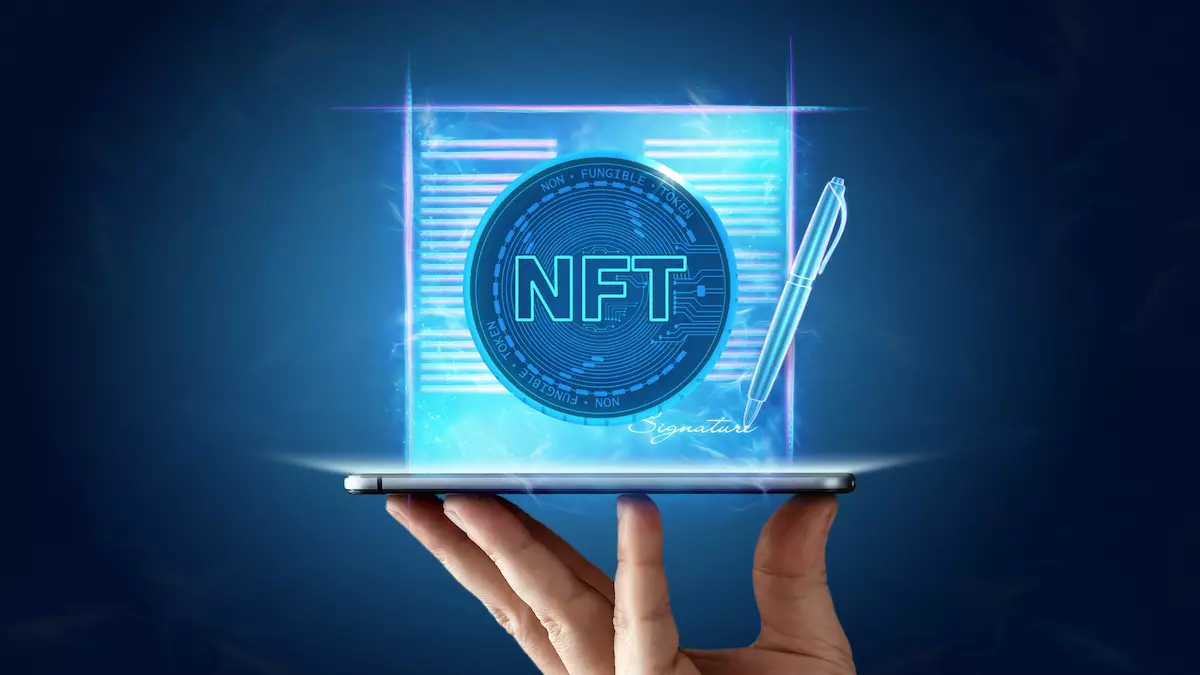As the realms of technology and digital ownership constantly evolve, the emergence of Non-Fungible Tokens (NFTs) has revolutionized the concept of digital assets. However, a new frontier is now on the horizon – Autonomous NFTs. These innovative tokens combine the uniqueness of NFTs with self-governing capabilities through the use of smart contracts. In this article, we will delve into the intricacies of Autonomous NFTs, exploring their functions, potential impact on various industries, and the transformative era they may usher in.
The concept of Autonomous NFTs takes NFTs beyond mere ownership by introducing self-executing properties into these digital assets. Through the implementation of smart contracts, these NFTs not only possess individuality, but they are also programmed to carry out specific actions automatically under predefined conditions. The integration of decentralized consensus mechanisms into Autonomous NFTs holds the potential to enhance transparency and inclusivity in governance. Furthermore, the incorporation of machine learning algorithms empowers these tokens to adapt and evolve in response to user interactions and changing environments. By utilizing oracles, Autonomous NFTs can connect with real-world data, enabling them to make informed decisions based on up-to-date information.
Autonomous NFTs have the power to reshape the landscape of digital art creation and sharing. Artists can program royalties directly into the NFTs, ensuring automatic compensation each time their works are sold. For collectors, these NFTs add layers of interaction and history to the collectibles, enabling the items to change appearance or unlock new content based on specific triggers. This dynamic and interactive experience creates a living story for the owner and enhances the value of the collectible.
Revolutionizing the Metaverse and Gaming
In the metaverse, Autonomous NFTs could propel a new era of engagement by assuming roles as Non-Playable Characters (NPCs) in virtual environments. These tokens could offer interactive quests and dynamic storylines for players, fostering a more lively and immersive gaming experience. Blockchain game creators can develop NFT wearables for avatars, allowing these digital fashion items to adapt in shape, color, and overall design based on real-time updates and changes within the game.
Transforming Finance and Real Estate
The potential of Autonomous NFTs extends beyond the realm of art and entertainment. In the financial sector, these tokens could represent shares in physical assets such as real estate or artwork. They could autonomously distribute earnings based on the performance or usage of the asset. Smart contracts within Autonomous NFTs can facilitate real estate transactions like mortgages or leases, automatically enforcing terms and managing payments without the need for traditional banking services.
Protection of Intellectual Property Rights
Creators’ intellectual property rights for NFTs can be enhanced through Autonomous NFTs. By embedding copyright and licensing information within the token itself, artists can maintain control over how their work is used. However, enforcing these rights in the digital realm presents ongoing challenges. As technology develops, effective methods to monitor and enforce IP rights need to be established.
Regulatory Challenges and Technical Hurdles
Like any emerging technology, Autonomous NFTs face regulatory challenges to ensure compliance with existing laws and develop effective frameworks for their use. Additionally, the security of Autonomous NFTs can be compromised if they are supplied with tainted data through breached oracles. Furthermore, the complexity of smart contracts and scalability issues of blockchains may hinder the mass adoption of these digital assets. Overcoming these technical hurdles is essential for unlocking the full potential of Autonomous NFTs.
A Future of Enhanced Digital Experiences
The future of Autonomous NFTs is filled with possibilities. As technology advances, these tokens are expected to become more sophisticated, leading to richer digital experiences. Autonomous NFTs can drive innovation in ownership and monetization models for creators and users alike. Through consensus mechanisms like voting or staking, these tokens can actively participate in decentralized decision-making, manage resources, and adapt actions based on community feedback. As adoption increases, Autonomous NFTs will shape a future where digital and physical assets coexist on the blockchain, paving the way for dynamic and multifaceted ownership.
Autonomous NFTs represent a groundbreaking frontier in the digital ownership and interaction landscape. These self-governing digital assets have the potential to revolutionize multiple industries, from art and gaming to real estate and finance. The integration of decentralized consensus mechanisms, machine learning algorithms, and oracles enable Autonomous NFTs to adapt, evolve, and make informed decisions. However, regulatory challenges and technical hurdles must be addressed to ensure widespread adoption and the realization of their full potential. As we stand on the precipice of this new era, embracing Autonomous NFTs promises to unlock a future where digital experiences transcend boundaries and ownership takes on a whole new dimension.

